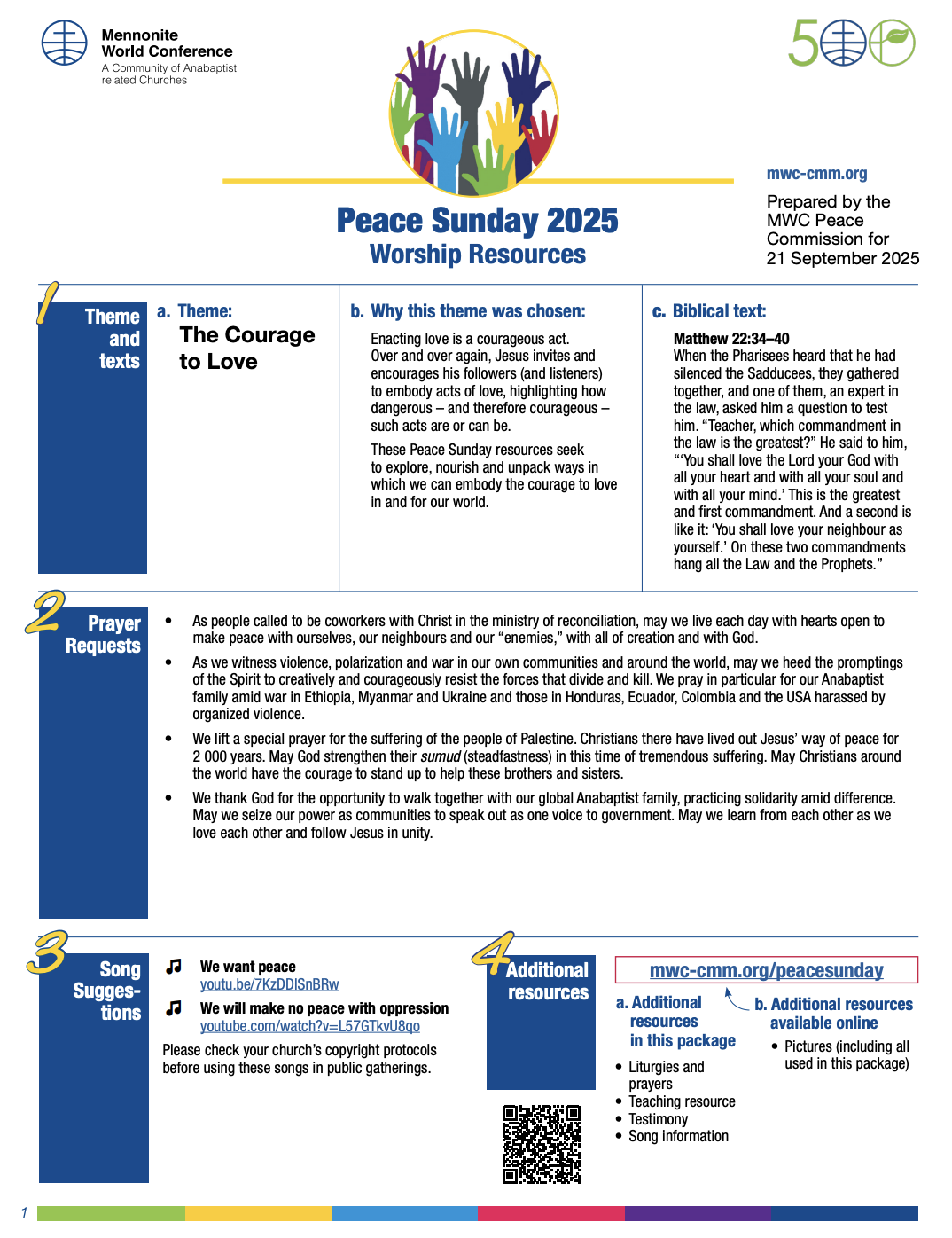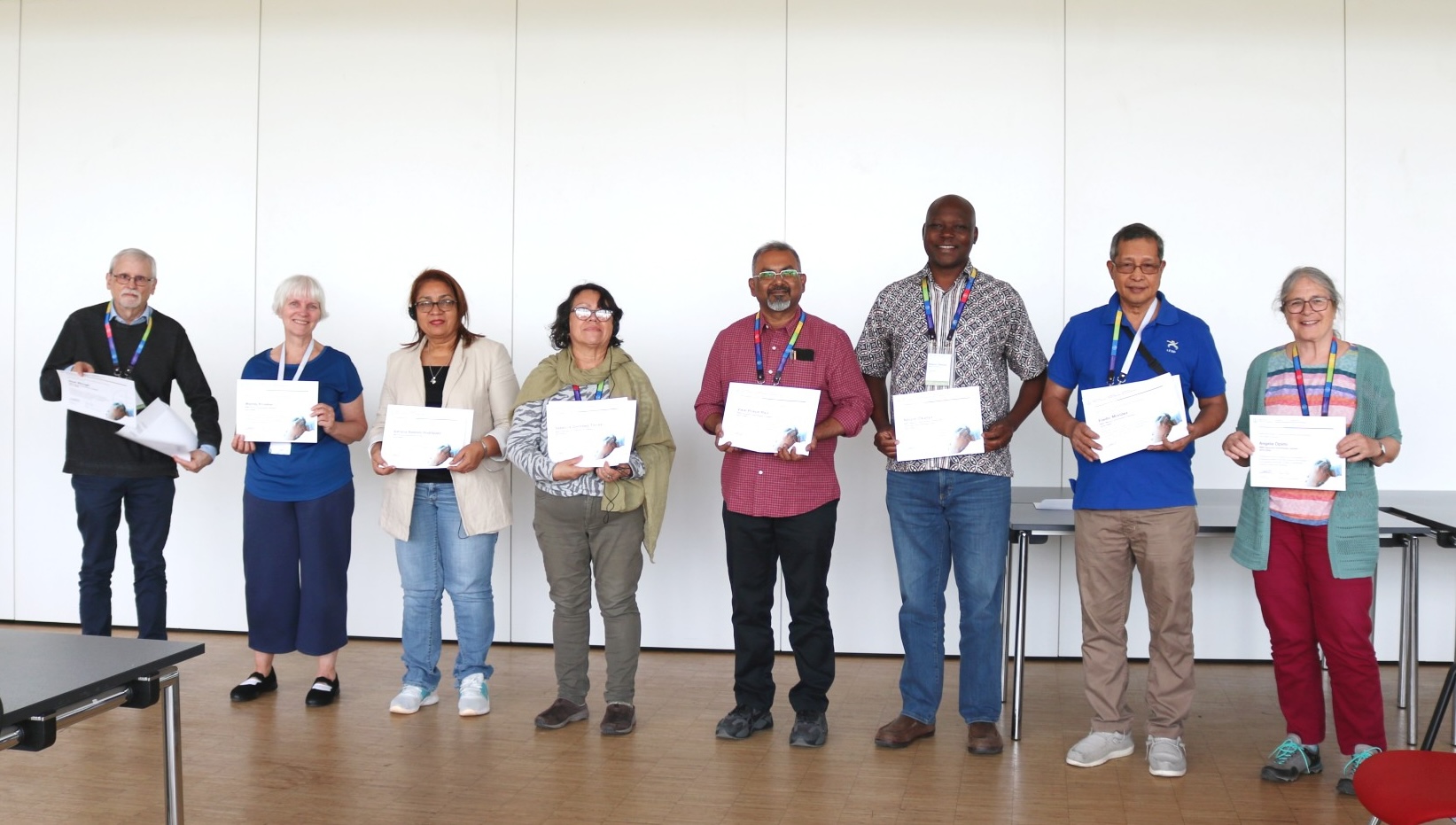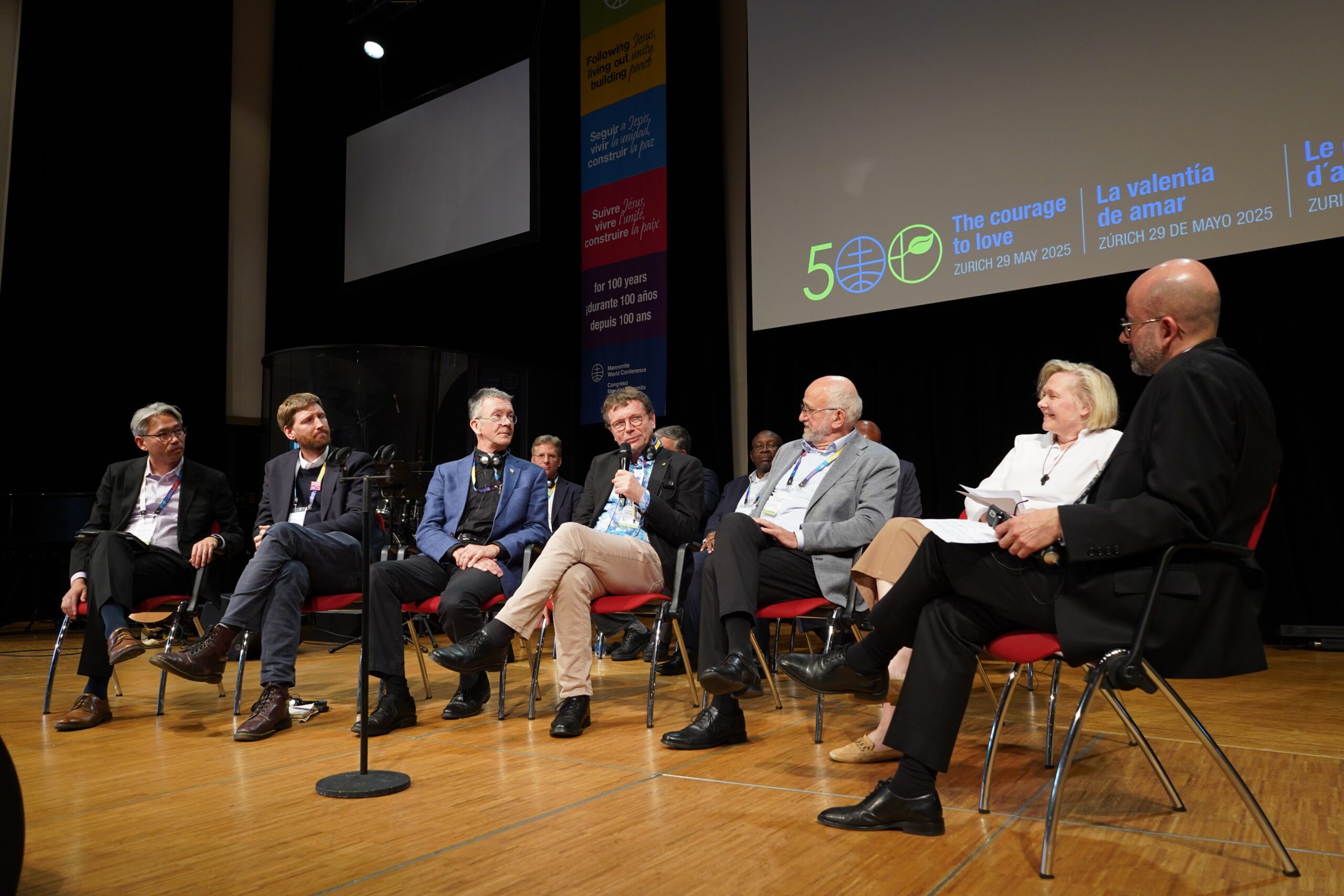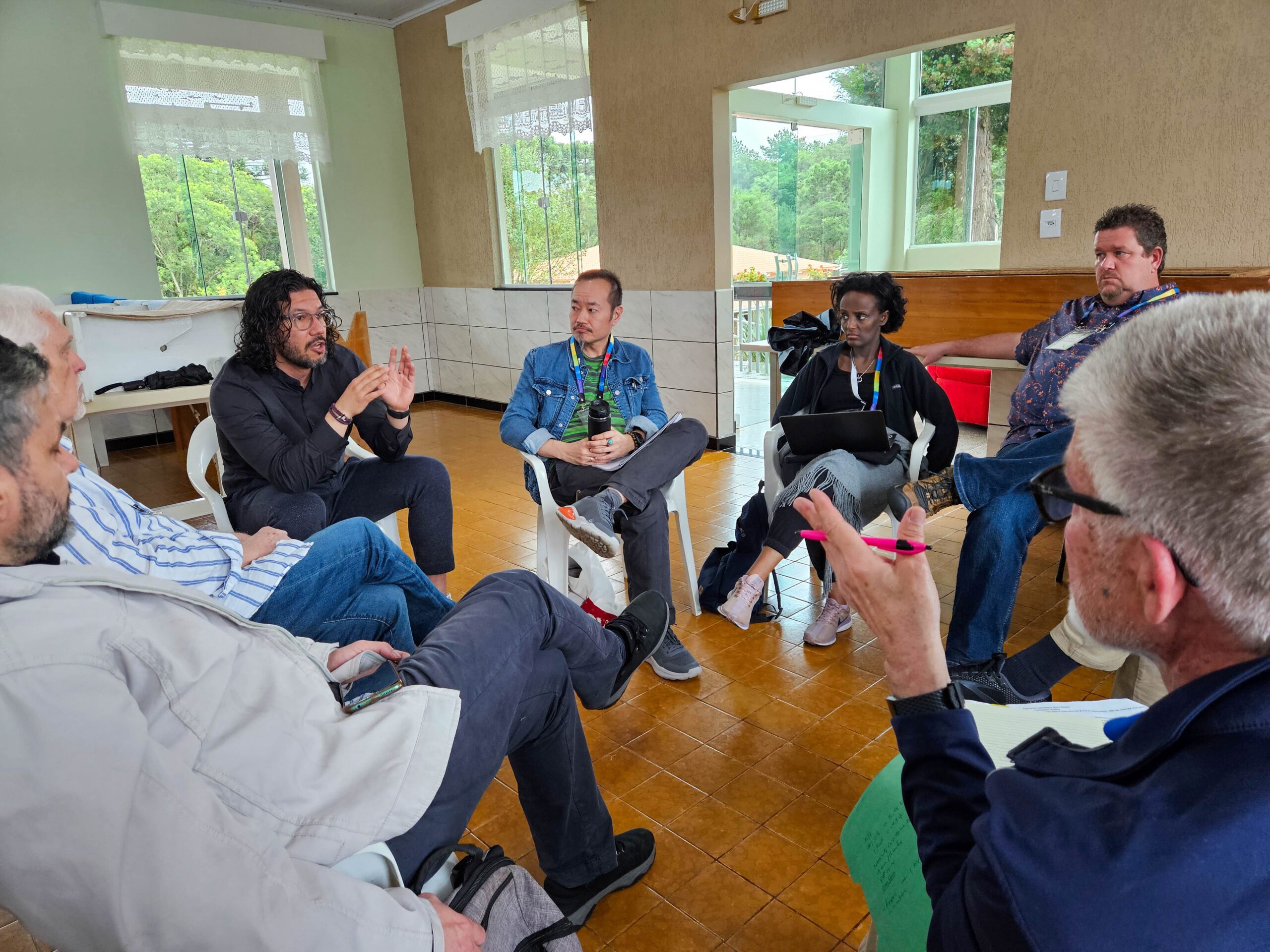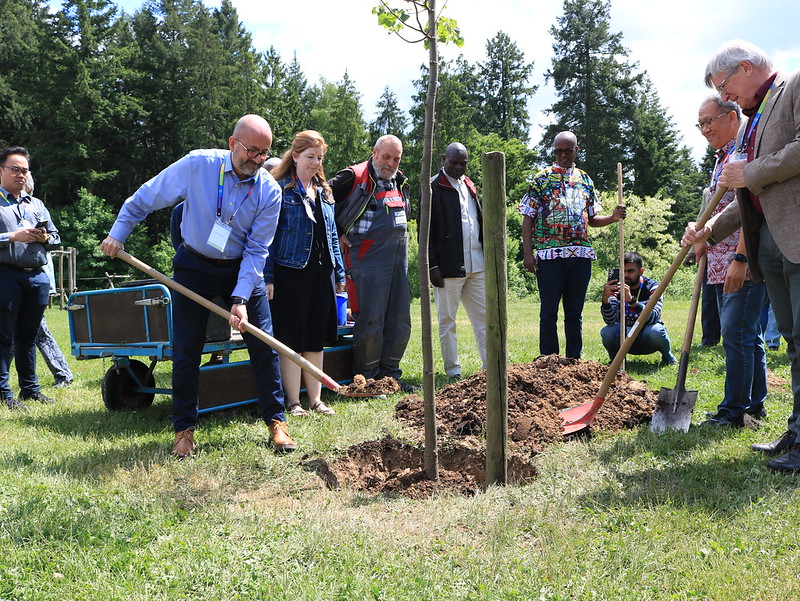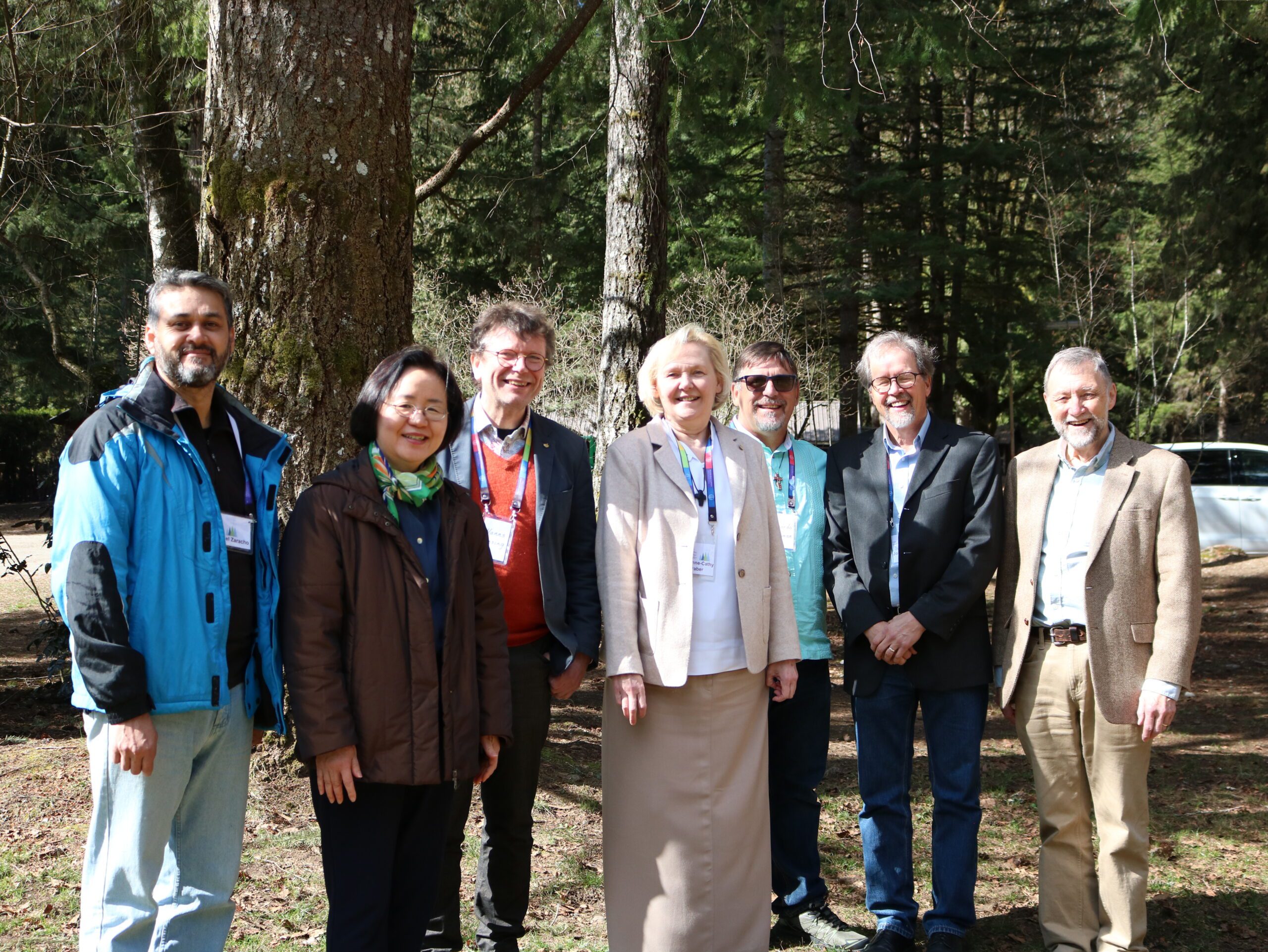-
Peace Sunday 2025 – worship resource
Theme The Courage to Love Why this theme was chosen Enacting love is a courageous act.Over and over again, Jesus invites and encourages his followers (and listeners) to embody acts of love, highlighting how dangerous – and therefore courageous – such acts are or can be.These Peace Sunday resources seek to explore, nourish and unpack…
-
Terms renewed and specialists appointed
As Mennonite World Conference’s Executive Committee and General Council delegates gather for worship, fellowship and discernment, there are farewells and hellos. Members of the Executive Committee and the Commission serve six-year terms. The terms are staggered to ensure continuity. Executive Committee The Executive Committee is elected from the General Council (GC) and meets annually. Two…
-
Living in a new era
César García (right) interviewed church leaders from other traditions who were present throughout General Council meetings in May 2025. (l-r) Paul Tché, Tim Gee, Neil Vigers, Hanns Lessing (with microphone), Samuel van der Maas, Anne-Cathy Graber (MWC secretary for ecumenical relations). “Reconciliation is central to our faith as Anabaptists,” said César García, Mennonite World Conference…
-
The beating heart of MWC
Deacons The responsibilities of the Deacons Commission include overseeing the Global Church Sharing Fund (GCSF), fostering prayer within the Anabaptist communion (sending the Prayer Network email, hosting Online Prayer Hour and collaborating with the president on pastoral letters), and deacon visits. From 2022 to the end of 2024, the Deacons Commission approved 20 GCSF proposals…
-
A pastoral letter regarding war in the Middle East
Beloved sisters and brothers: The escalation of war in the Middle East today is a source of fear and grief for our Anabaptist family around the world. For some, this is a new reality, for others it adds to the burden of violence carried for years or decades from local conflict. We see all of…
-
A reminder of our presence in the world
“We are stewards of creation; this tree reminds us that every step we take as Commissions, as Officers, and Networks has repercussions for creation,” says Henk Stenvers, MWC president. It also symbolizes our presence in the world, he said. The Executive Committee, Commissions, staff and Creation Care Task Force planted a linden tree (tilia cordata)…
-
MKC calls for prayer from our global Anabaptist family
Beloved sisters and brothers Mennonite World Conference calls for prayer for our member church Meserete Kristos Church (MKC) facing religious persecution in Ethiopia from extremist factions. The latest incident to affect ministers of the gospel in MKC occurred 15 May 2025. An extremist group in the region attacked an evangelist working in the West Hararghe.…
-
Powering the spinning wheel
Join in prayer for the global family “Prayer has been our spinning wheel. Thanks to the global church for the resilience in your prayers. It is encouraging to know that someone somewhere in the globe is reporting your issues to God,” says Okoth Simon Onyango, Mennonite Church Uganda, bishop. The members of Mennonite World Conference…
-
Restoring Our Family to Wholeness study guide
A guide for study, worship and dialogue “Restoring Our Family to Wholeness: Seeking a Common Witness”
-
Seeking common witness together
MWC-WCRC dialogue creates statement and study guide “The search for peace starts within the body of Christ,” says Tom Yoder Neufeld, chair of MWC’s Faith & Life Commission. As Mennonite World Conference celebrates 100 years of living out unity within the Anabaptist family, our leaders are also working on our mission to relate with other…
-
Leaving a legacy
Network webinars inspire, teach and connect Anabaptists are following Jesus in the world, building peace. This is often accomplished through organizations developed by churches to work alongside. The Networks* of Mennonite World Conference provide a home for members of these organizations to learn from one other about what it means to be Anabaptist-related institutions; to…
